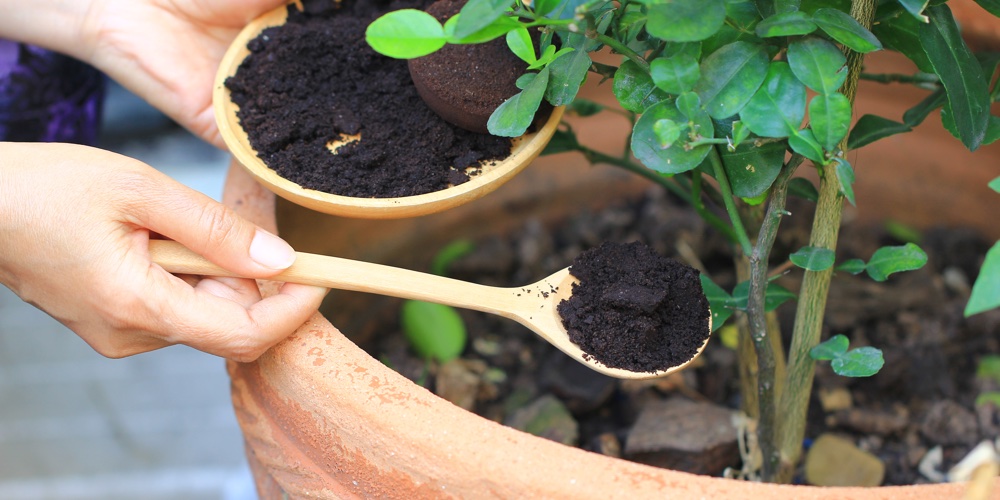Blog, Spill The Beans
Columbian Coffee Beans
Are you a coffee lover searching for the perfect cup? Colombian coffee beans are known for their rich flavour and aroma. In fact, Colombia is the third-largest coffee producer in the world.
Key Takeaways
- Colombian coffee beans are renowned for their well-balanced, medium-bodied taste with notes of caramel, nuts, and subtle hints of fruit. Colombia’s diverse growing regions, each with its unique climate and soil conditions, contribute to the wide range of flavours.
- The coffee – growing regions of Colombia are situated high in the Andes Mountains, where the beans thrive in the rich volcanic soil, steady rainfall, and mild temperatures. The “Coffee Triangle” of Caldas, Quindío, and Risaralda, along with Antioquia, Tolima, and Santander, are the key areas for coffee production.
- The roasting process is crucial in bringing out the best flavours and aromas from Colombian coffee beans. The process involves heating the beans gradually to temperatures between 370°F to 540°F (188°C to 282°C), causing them to turn yellow, light brown, and finally crack and expand. The beans are then cooled and allowed to rest for several hours to several days, depending on the desired roast level and flavour profile.
- Various brewing methods work exceptionally well with Colombian coffee beans, including French Press, Pour-Over, Espresso, Cold Brew, Moka Pot, and AeroPress. Each technique highlights distinct flavours and aromas from these high-quality beans.
- To brew the perfect cup of Colombian coffee, it is essential to grind the beans just before brewing and use the appropriate grind size for the chosen brewing method. A digital scale is recommended for accurate measurements, with a good starting point of 1 gram of coffee per 16 grams of water. Experimenting with different ratios and grind sizes can help find the perfect brew to suit individual taste preferences.
The Unique Traits of Colombian Coffee Beans
Colombia’s coffee is a real treat for your taste buds. It has a distinct flavour profile that sets it apart from other coffees.
The Taste Profile
Imagine sipping a cup of Colombian coffee. As the rich, smooth liquid hits your tongue, a symphony of flavours unfolds. Notes of caramel, nuts, and subtle hints of fruit dance together in perfect harmony.
This is the signature taste profile that sets Colombian coffee apart from the rest.
Colombian coffee beans are known for their well-balanced, medium-bodied taste. The country’s diverse growing regions, each with its own unique climate and soil conditions, contribute to the wide range of flavours found in Colombian coffee.
Origins and Growing Conditions
Colombia’s coffee-growing regions sit high in the Andes Mountains. The beans thrive in the rich volcanic soil, steady rainfall, and mild temperatures. These conditions create an ideal environment for growing premium Arabica coffee.
Most Colombian coffee comes from the “Coffee Triangle” of Caldas, Quindío, and Risaralda. Other key areas include Antioquia, Tolima, and Santander. Each region has its own unique climate and terrain that influence the coffee’s flavor profile.
The higher elevations produce a bright acidity, while lower altitudes tend to yield a fuller body and nuttier taste.
The Art of Roasting Colombian Coffee Beans
The roasting process brings out the best in Colombian coffee beans. Skilled roasters use their senses to get the perfect roast, from light to dark.
The Process
The roasting process is a crucial step in bringing out the best flavours and aromas from Colombian coffee beans. Here’s a step-by-step guide to the process:
- Green coffee beans are carefully selected and sorted to ensure only the highest quality beans are used for roasting.
- The beans are then heated in a roaster, which can be either a drum roaster or an air roaster. The temperature is gradually increased, typically reaching between 370°F to 540°F (188°C to 282°C).
- As the beans heat up, they begin to turn yellow and emit a grassy aroma. This is known as the drying phase.
- The beans then start to turn light brown and emit a bread-like aroma. This is called the Maillard reaction, where sugars and amino acids react to create complex flavours.
- At around 400°F (204°C), the beans begin to crack and expand, releasing trapped gases. This is known as the first crack.
- For a light roast, the process is stopped shortly after the first crack. For medium and dark roasts, the beans are heated further until they reach the desired roast level.
- Once the desired roast level is achieved, the beans are quickly cooled to stop the roasting process. This can be done using air or water cooling methods.
- The cooled beans are then allowed to rest for several hours to several days, depending on the roast level and desired flavour profile. This resting period allows the flavours to develop and stabilise.
- Finally, the roasted beans are packaged and sealed to maintain their freshness and flavour until they reach the consumer.
Single Origin Roasting
With single origin roasting, the focus is on highlighting the distinct flavours and characteristics of coffee beans from a specific region or farm. This approach allows coffee roasters to showcase the unique taste profile of each bean variety, which is influenced by factors such as soil, climate, and elevation.
By carefully selecting and roasting beans from a single source, roasters can create a cup of coffee that truly reflects the terroir of its origin.
Single origin roasting requires a keen understanding of the bean’s inherent qualities and how to best bring out its potential. Roasters must consider the bean’s density, moisture content, and size to determine the optimal roasting temperature and duration.
Brewing Perfect Colombian Coffee at Home
Brewing perfect Colombian coffee at home is easy with the right tools and techniques. A French press or pour-over dripper will help you make a delicious cup every time.
Suitable Brewing Methods
There are various brewing methods that work exceptionally well with Colombian coffee beans. Each technique brings out distinct flavours and aromas from these high-quality beans:
- French Press: This classic method allows the coffee grounds to steep directly in hot water, resulting in a rich and full-bodied cup. The mesh filter preserves the natural oils and flavours of the Colombian beans.
- Pour-Over: The pour-over method, using devices like the Chemex or Hario V60, highlights the subtle nuances of single-origin Colombian coffee. The slow, controlled pouring process extracts a clean and bright brew.
- Espresso: Colombian beans make for a fantastic espresso shot. The high pressure of the espresso machine draws out the beans’ intense flavours, creating a concentrated and aromatic coffee with a beautiful crema on top.
- Cold Brew: For a refreshing twist, try cold brewing your Colombian coffee. This method involves steeping coarsely ground beans in cold water for an extended period, resulting in a smooth, less acidic, and highly caffeinated concentrate.
- Moka Pot: The stovetop Moka pot produces a strong, espresso-like coffee that showcases the boldness of Colombian beans. The pressure generated by the boiling water extracts a robust and flavorful brew.
- AeroPress: This portable brewing device is perfect for making a quick and delicious cup of Colombian coffee. The AeroPress uses pressure to create a smooth, full-bodied coffee with minimal bitterness.
Grinding and Measurement Suggestions
The perfect cup of Colombian coffee starts with the right grind and measurements. Follow these tips to brew a delicious cup every time:
- Grind your beans just before brewing for the freshest flavour. Use a burr grinder for a consistent grind size.
- For a French press or cold brew, use a coarse grind. This allows the water to extract the coffee’s flavours without over-extracting and making it bitter.
- A medium grind works well for pour – over methods like a Chemex or Hario V60. This grind size allows the water to flow through the grounds at the right speed for optimal extraction.
- If you’re using an espresso machine, use a fine grind. The small particles create more surface area for the water to extract the coffee’s flavours quickly under pressure.
- Use a digital scale to measure your coffee beans and water for the most accurate ratio. A good starting point is 1 gram of coffee per 16 grams of water, but adjust to your taste preferences.
- If you don’t have a scale, use 2 tablespoons of ground coffee per 6 ounces of water as a general guideline. Keep in mind that coffee beans can vary in density, so volume measurements are less precise than weight.
- Experiment with different ratios and grind sizes to find your perfect brew. Keep notes on what works best for your taste buds and brewing method.
FAQs
What makes Colombian coffee beans so special?
Colombia’s perfect climate and rich soil create ideal conditions for growing the world’s best coffee. The country is synonymous with top-notch beans, thanks to its attention to detail from seed to cup.
Is Colombian coffee Arabica or Robusta?
Most Colombian coffee is 100% washed Arabica. Arabica beans are known for their smooth, nuanced flavour compared to the harsher Robusta variety. You’ll taste hints of nuts, fruits and berries in your brew.
Which regions in Colombia produce the best coffee?
The “Coffee Triangle” or “Eje Cafetero” is renowned for its exceptional beans. This area includes the departments of Caldas, Quindío and Risaralda. The unique microclimate and high altitude produce coffees with a distinct, mild flavour profile.
How does the Colombian Coffee Growers Federation support farmers?
The Federación Nacional de Cafeteros (FNC) has supported small coffee farmers since the 19th century. They provide resources, training and fair prices to over 500,000 growers. This helps maintain the industry’s high standards.
What’s the best way to brew Colombian coffee at home?
Colombian beans shine in any brewing method, from espresso to French press. For a classic cup, use a pour-over or drip machine. Use filtered water just off the boil and grind beans right before brewing for the freshest flavour.
Can I buy single-origin Colombian coffee online?
Absolutely! Many roasters offer single-origin Colombian coffees in their online shops. Look for whole bean options to grind fresh at home. Some even roast to order, so your beans arrive at peak freshness.



